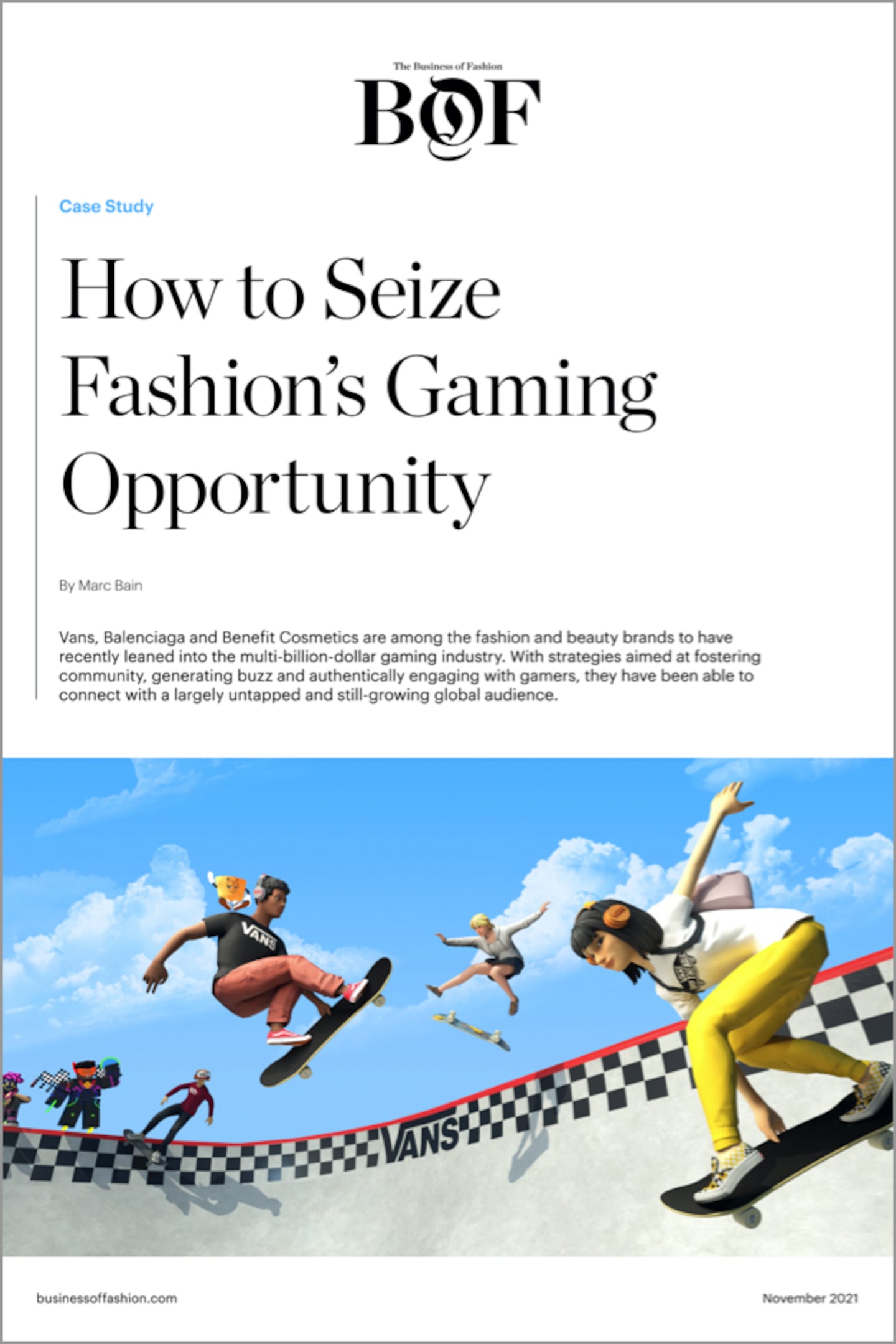
The Business of Fashion
Agenda-setting intelligence, analysis and advice for the global fashion community.

Agenda-setting intelligence, analysis and advice for the global fashion community.

One fact about the global video game market tends to surprise those unfamiliar with the business.
“The video game industry is larger than the music and film industry combined,” said David Reitman, the global gaming lead at Accenture, a strategy and technology services firm. “When you make that statement, it basically has people take a pause.”
While estimates of the value of the global gaming industry vary, market researchers generally peg direct revenue from video games at about $180 billion to $200 billion, including sales of game consoles, games and hardware like controllers, and revenue from other sources such as in-game purchases and advertising.
By comparison, the global entertainment industry, counting both theatrical and home viewing, surpassed $100 billion for the first time ever in 2019 before suffering a blow from the pandemic in 2020. The global recorded music market, meanwhile, grew to reach $21.6 billion in 2020.
ADVERTISEMENT
The numbers offer perspective on just how big gaming has become in the roughly half-century that modern video games have existed. At this point, just watching others play games is an activity with hundreds of millions of participants, and games now vie for attention with all other forms of entertainment.
“We compete with [and lose to] Fortnite more than HBO,” Netflix admitted in its 2019 letter to shareholders.
Fashion and sportswear brands honed their use of other forms of entertainment like film, sports and music as marketing channels decades ago. It’s hard to imagine Armani’s legacy without the movie “American Gigolo,” or what Nike might have become if it had not gotten its sneakers on a rookie basketball star named Michael Jordan. Video games are a much younger medium, and it’s only recently that fashion has taken notice. The industry has lately started trying to connect with gamers, and the past year has seen those efforts accelerate.
One reason fashion players are expressing interest is that games offer a potential revenue stream from sales of digital clothing and products. But perhaps more significantly, they are a way for brands to extend themselves into the virtual spaces where people are spending a growing share of their time. They represent a relatively untapped marketing channel where creative companies can produce immersive, interactive experiences unlike anything available to them through other mediums.
At the same time, there has been a surge of interest in the idea of the metaverse, a buzzy term with origins in science fiction, generally imagined as a parallel virtual counterpart to the real world, most likely formed from a patchwork of different online platforms. Popular games such as Fortnite and Roblox have emerged as the sites where its foundations are most clearly being laid. Now Meta, the group formerly known as Facebook, is investing billions in trying to make this vision of the metaverse a reality. Fashion companies, many of which were slow to embrace e-commerce and have spent years building up their digital presences, are resolved not to be late carving their place in this future.
This case study examines some of the most significant recent efforts by fashion and beauty companies to reach gamers, and unpicks their strategies to examine the opportunities and obstacles in engaging with gaming for marketing:
The companies spoke to BoF about what their aims were, what it took to bring the projects to fruition and what they have learned about video games and gamers.
Editor’s Note: This case study was revised on Dec. 1, 2021. An earlier version identified the image of Doggo from Fortnite as one that was used in a billboard in the game and in real-world locations. That is incorrect. The image shows user-generated content that appeared inside Fortnite as part of a “living lookbook” campaign.
The nature of livestream transactions makes it hard to identify and weed out counterfeits and fakes despite growth of new technologies aimed at detecting infringement.
The extraordinary expectations placed on the technology have set it up for the inevitable comedown. But that’s when the real work of seeing whether it can be truly transformative begins.
Successful social media acquisitions require keeping both talent and technology in place. Neither is likely to happen in a deal for the Chinese app, writes Dave Lee.
TikTok’s first time sponsoring the glitzy event comes just as the US effectively deemed the company a national security threat under its current ownership, raising complications for Condé Nast and the gala’s other organisers.